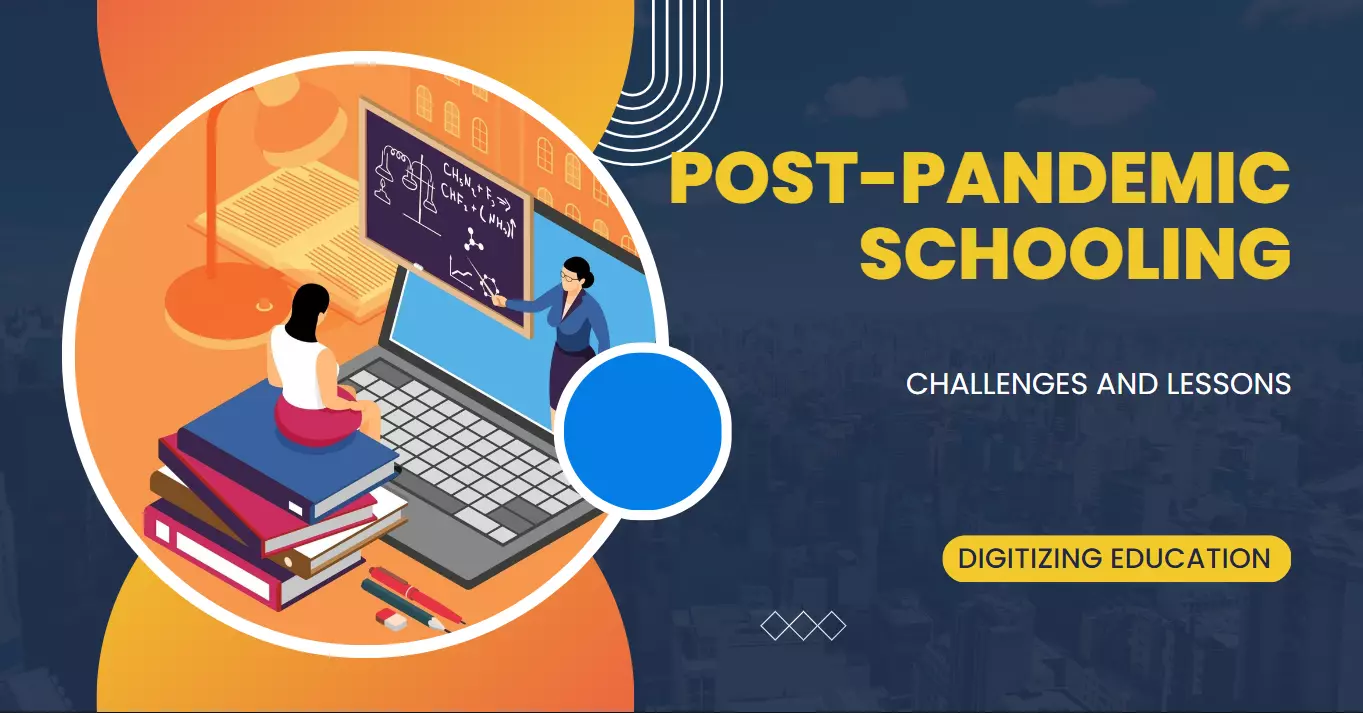Education in a Post-pandemic World

The COVID-19 pandemic has disrupted the education system worldwide, forcing schools to close their doors and move learning online. In many countries, it meant that kids could not access formal education for a year or two. While this transition has been easier for higher education institutions that have been building the infrastructure for e-learning over long periods of time, it has been challenging for primary and secondary schools due to a lack of infrastructure, inadequate teacher training, and limited access to mobile devices and internet connectivity, particularly for students from low-income families.
Extent of the Problem
The pandemic has affected millions of children worldwide, depriving them of access to education and essential school-based services, such as food and health care. This was not limited to developing countries, as even the poor kids in developed countries faced the same problems, we saw Marcus Rashford (a famous pro footballer playing for Manchester United) run a campaign to feed kids from poorer backgrounds who could no longer have access to school lunch. According to the United Nations World Food Programme, school closures due to the pandemic have disrupted the daily school meals of 370 million children worldwide, leaving them without the nutrition they need to learn, grow, and thrive. Additionally, school closures have heightened the risk of children dropping out of school, especially those who are already vulnerable to poverty, discrimination, and marginalization.
Response Measures
As a response to these challenges, governments worldwide have been mobilizing resources to ensure that children can continue to learn during the pandemic. In some cases, governments have been distributing mobile devices, tablets, and laptops to students who do not have access to them, while others have been offering free internet services and mobile data packages to low-income families. Additionally, some governments have been investing in the training of teachers to deliver effective online instruction and in the development of digital resources and curricula to support remote learning.
However, despite these efforts, many students, especially those from low-income families, continue to face significant barriers to accessing education during the pandemic. For example, in sub-Saharan Africa, only 10% of households have access to a computer, and only 19% have access to the internet, making it challenging for students to access online learning resources. Additionally, many teachers lack the skills and knowledge needed to deliver effective online instruction, and parents and caregivers are struggling to support their children's learning at home, particularly those who have limited formal education themselves.
To address these challenges, it is essential for governments to prioritize education in their COVID-19 response efforts. This includes investing in infrastructure, such as expanding access to electricity and internet connectivity in rural and remote areas, and developing effective policies to address the digital divide. Additionally, governments must invest in the training of teachers and other education professionals to deliver high-quality online instruction and provide support and guidance to parents and caregivers to help them navigate the challenges of remote learning.
It is heartening to note that changes are already being made in the virtual space by public schools. My nephew who attends Muranga High School, had lessons via Zoom every afternoon over the holidays. This means teachers are adapting to new modes of reaching students even when they are not in school.
Education Inequalities
Furthermore, it is important to recognize that the COVID-19 pandemic has highlighted existing inequalities in education systems worldwide. For example, students from low-income families, students with disabilities, and students from marginalized communities have been disproportionately affected by school closures and the shift to remote learning. Therefore, it is essential to adopt a more inclusive and equitable approach to education that addresses the diverse learning needs of all students, especially those who are traditionally underserved or excluded from mainstream education.
In conclusion, the COVID-19 pandemic has had a profound impact on education worldwide, highlighting the need for innovative and effective approaches to teaching and learning. While the pandemic has created significant challenges, it has also created opportunities to rethink traditional approaches to education and to invest in digital resources, infrastructure, and training that can support more flexible and accessible modes of learning. By prioritizing education in their COVID-19 response efforts, governments can ensure that all children, regardless of their socioeconomic status, have access to high-quality education and the opportunity to learn, grow, and reach their full potential. UNESCO noted that "Public education cannot be dependent on digital platforms owned by private companies". A lot of investment needs to be made by governments worldwide to create open-source resources that can drive the digitalization of education.
